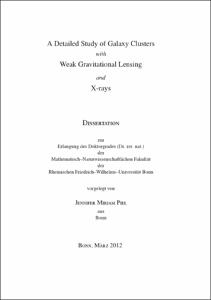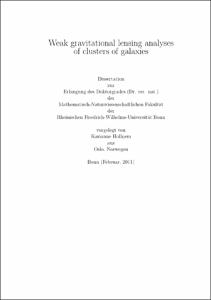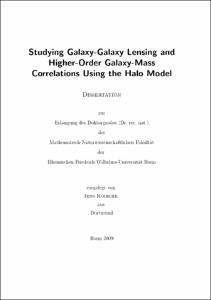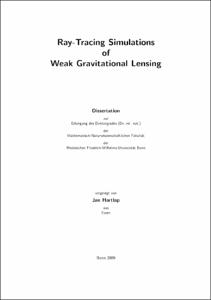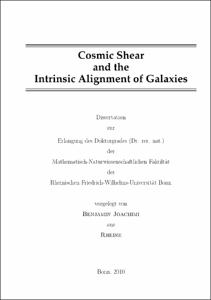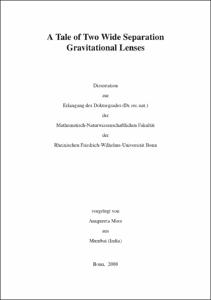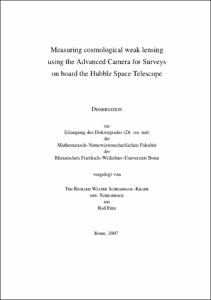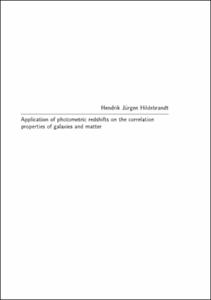E-Dissertationen: Search
Now showing items 1-10 of 23
A Detailed Study of Galaxy Clusters with Weak Gravitational Lensing and X-rays
(2012-07-17)
Galaxy clusters represent the top of hierarchical structure formation with the largest dark matter halos. Their abundance with respect to mass and redshift can be used to constrain cosmological parameters. The most extensive ...
Weak gravitational lensing analyses of clusters of galaxies
(2011-04-04)
Comprising the most massive gravitationally bound and relaxed structures in the Universe, galaxy clusters are essential in providing a deeper understanding of the properties of dark matter. Being cosmologically young ...
Weak Lensing Mass Determination of Eight X-ray Selected Galaxy Clusters from the 400d Survey
(2011-01-19)
Evolution in the mass function of galaxy clusters sensitively traces both the expansion history of the Universe and cosmological structure formation. Hence, measuring the number density of galaxy clusters as a function of ...
Theoretical Aspects of Cosmic Shear and its Ability to constrain Cosmological Parameters
(2009-03-13)
In the last decade weak gravitational lensing by the large-scale structure of the Universe, also called cosmic shear, has become an important tool to constrain cosmological parameters. Despite this success there remain ...
Studying Galaxy-Galaxy Lensing and Higher-Order Galaxy-Mass Correlations Using the Halo Model
(2009-06-22)
In recent years, the distribution of galaxies in the Universe could be measured up to large distances and over a significant part of the sky. The analysis of this large-scale structure contains a wealth of cosmological ...
Ray-Tracing Simulations of Weak Gravitational Lensing
(2009-07-02)
Weak gravitational lensing, i.e. the distortion of images of distant galaxies due to the deflection of light rays in gravitational fields, is a powerful method to study the matter distribution in the Universe. It can be ...
Cosmic Shear and the Intrinsic Alignment of Galaxies
(2010-11-12)
Cosmology has recently entered an era of increasingly rich observational data sets, all being in agreement with a cosmological standard model that features only a small number of free parameters. One of the most powerful ...
A Tale of Two Wide Separation Gravitational Lenses
(2008)
Wide separation gravitational lens systems are good candidates to probe the matter (luminous+dark) distribution in massive halos. Investigation of two wide separation lens systems is carried out. MG 2016+112 is a quadruply ...
Measuring cosmological weak lensing using the Advanced Camera for Surveys on board the Hubble Space Telescope
(2008)
Following from the theory of General Relativity, light-bundles are deflected and differentially distorted while passing through the gravitational potential of matter inhomogeneities. The gravitational lensing effect caused ...
Application of photometric redshifts on the correlation properties of galaxies and matter
(2007)
In the past years cosmology, the science of the universe as a whole, has seen tremendous progress. The Lambda-Cold-Dark-Matter scenario is widely accepted as the standard model of cosmology describing the evolution of the ...


